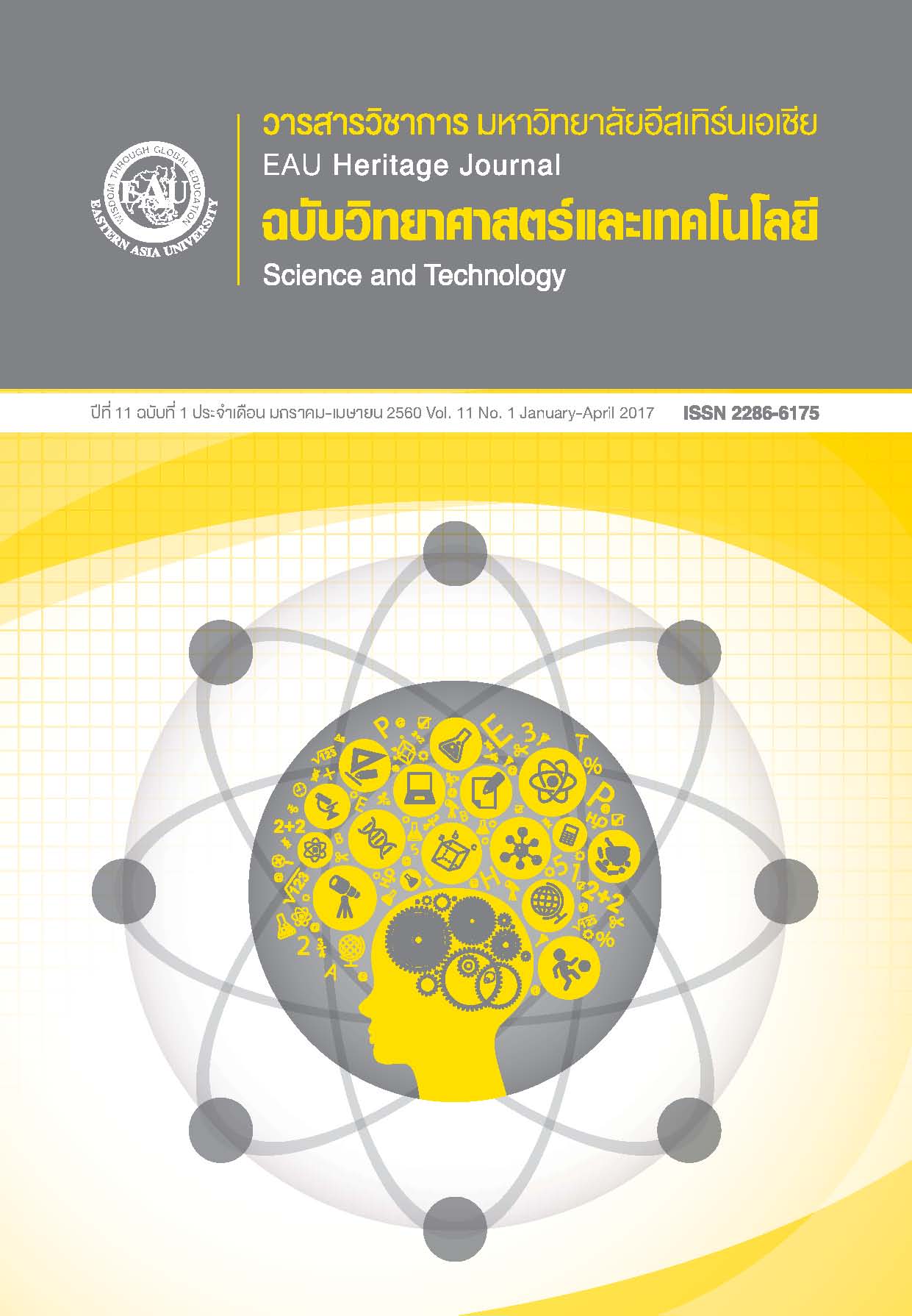Causal Relationship Model of Environmental Health Integrated with Environmental Education
คำสำคัญ:
Causal Relationship Model, Environmental Health, Environmental Educationบทคัดย่อ
The objective of research was to develop the causal relationship model of environmental health and environmental education affecting to behavior of behavior of environmental health for heath creation through inspiration of environmental conservation. The populations were 15,157 undergraduate students of Rajabhat Mahasarakham University in first semester of academic year of 2016. The simple random sampling technique was employed to collect the sample for 400 undergraduate students. The questionnaire was used as tool for data collection with Structural Equation model (SEM) was used for model verification.
The results revealed structural model confirmatory factors of Environmental Health Knowledge (EHK) and Environmental Education (EE) were able to explain the variation of endogenous factors of Inspiration of Inspiration of Public Mind (INS) to cause Environmental Health Behavior (EBH) with 86.00 percents as the following in equation (1).
EHB = 0.40*INS + 0.35*EHK + 0.22*EE ………………….…………(1) (R2 = 0.86)
Moreover, confirmatory factors Environmental Health Knowledge (EHK) and Environmental Education (EE) were able to explain the variation of confirmatory factors of Inspiration of Public Mind (INS) with 82.00 percents. Therefore, the equation can be written as the following equation (2).
INS = 0.18*EHK + 0.94*EE …………..……………….…..……….(2) (R2 = 0.95)
Equation (2) factors that had the most effect to Inspiration of Public Mind (INS) to cause Environmental Health Behavior (EBH) was Environmental Education (EE) with the effect of 0.94 and subsequence was Environmental Health Knowledge (EHK) with the effect of 0.18. These were able to explain the variation of Inspiration of Environmental Conservation with 95.00 percents.
Considering on Chi-Square value/df was 1.736 that was lesser than 5, therefore it was accepted that hypothetical model of research was congruent to empirical data. Moreover, it was considered on other statistical values to verify the congruence that were Goodness of Fit Index (GFI) and Adjust Goodness of Fit Index (AGFI) were 0.94 and 0.91 respectively (GFI > 0.90 and AGFI > 0.90), RMSEA <0.05 (0.045) and critical number = 216.55 which was more than 200. It indicated that model was congruent to empirical data.






